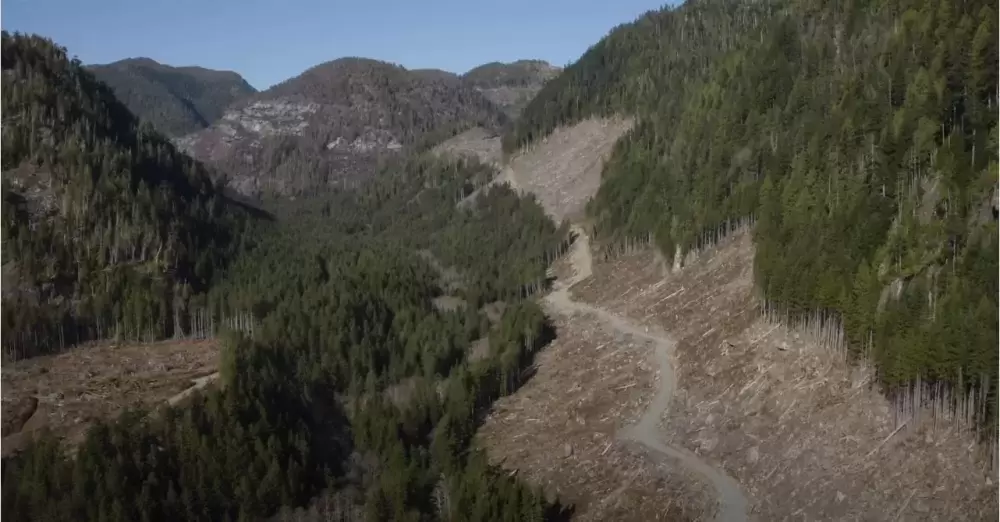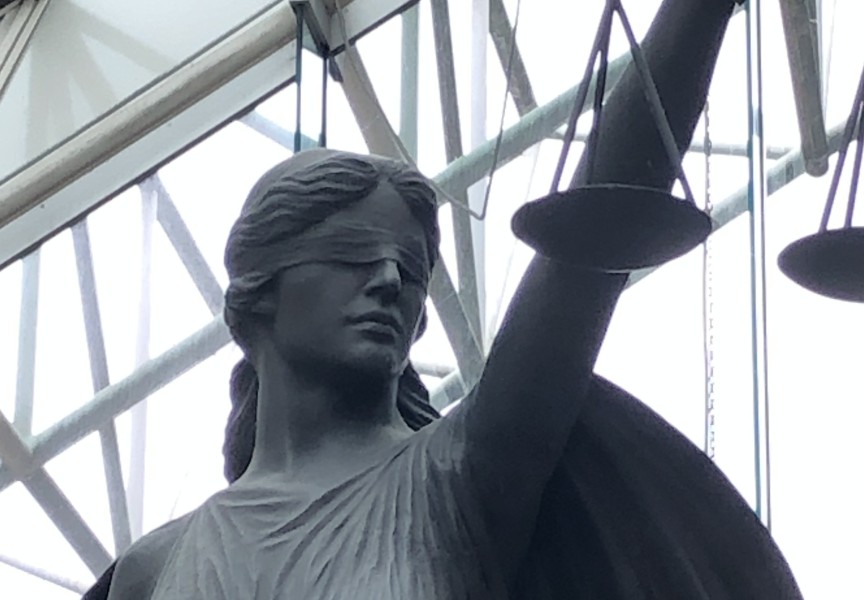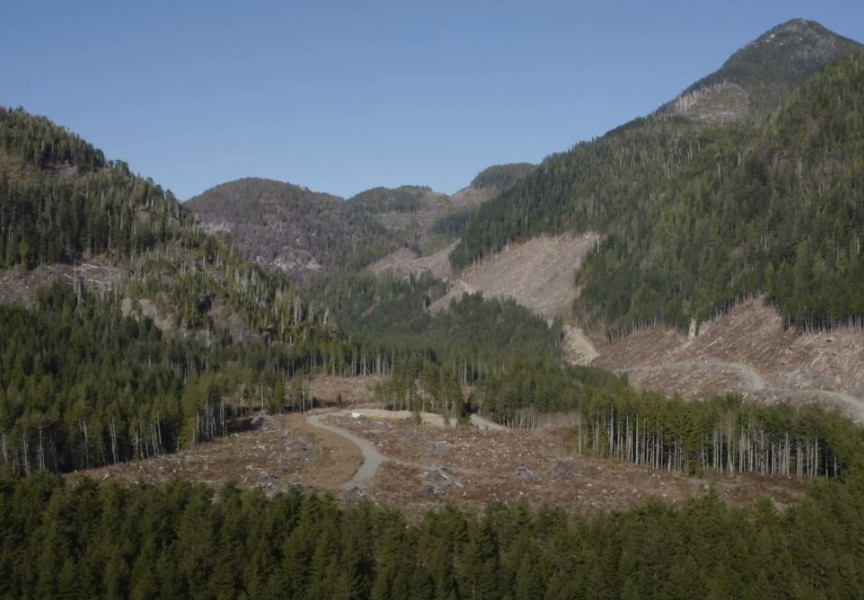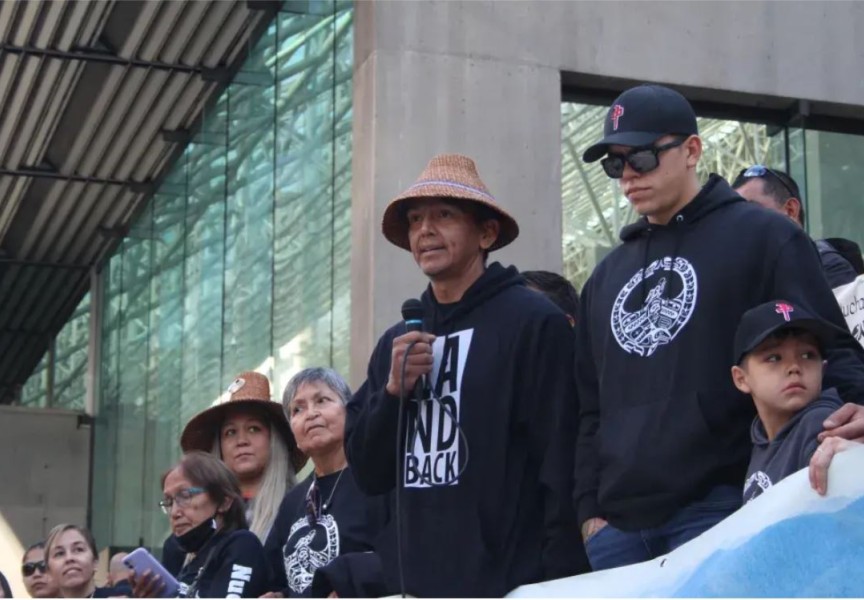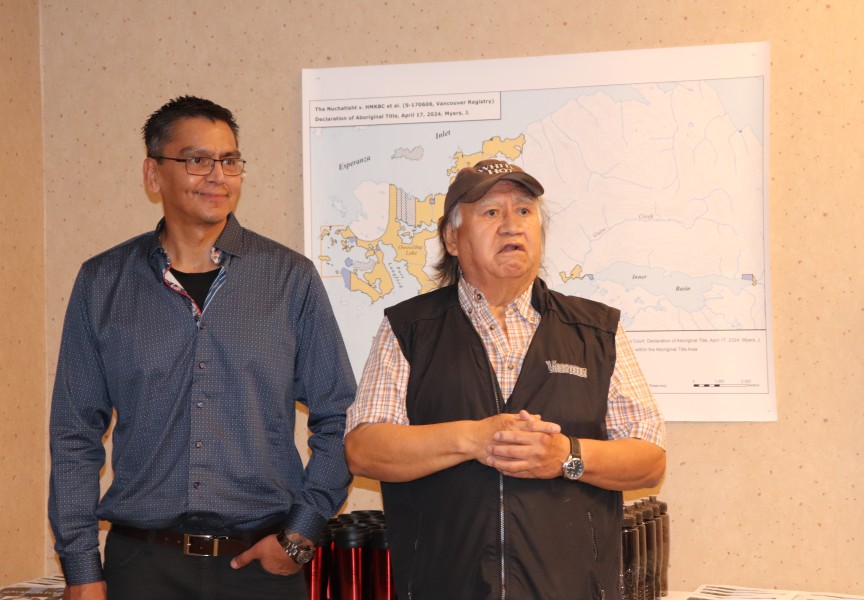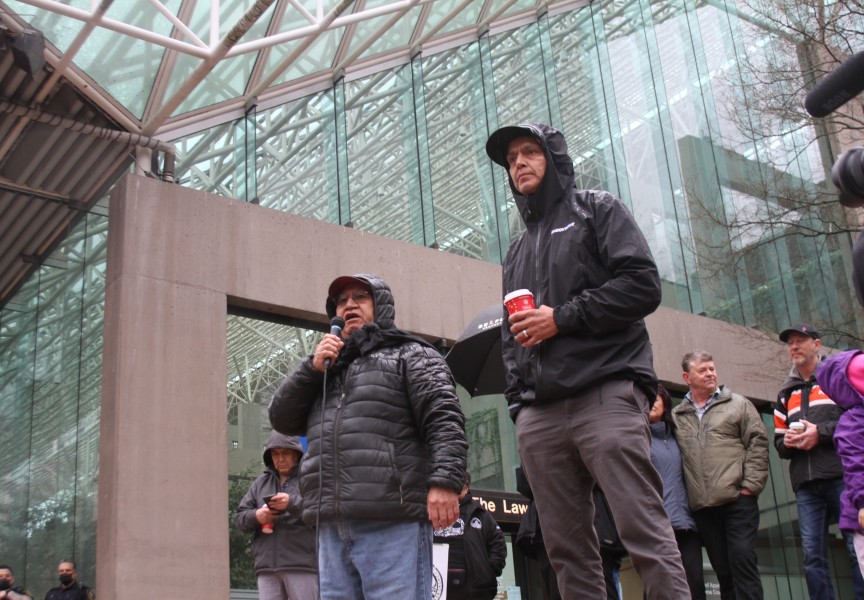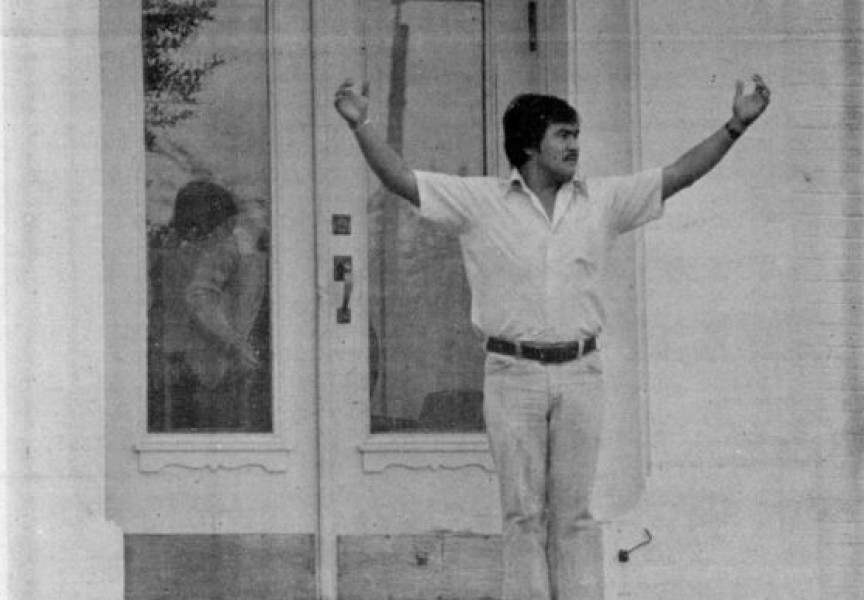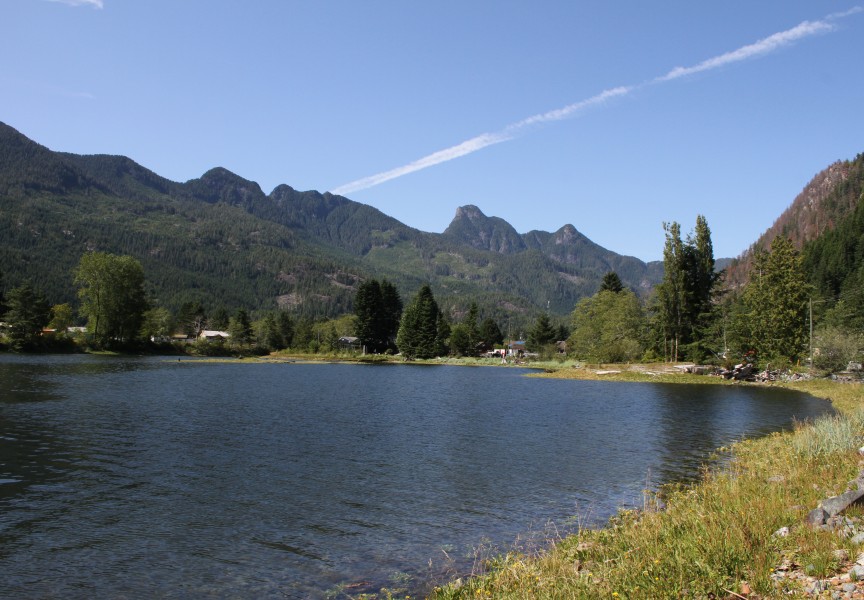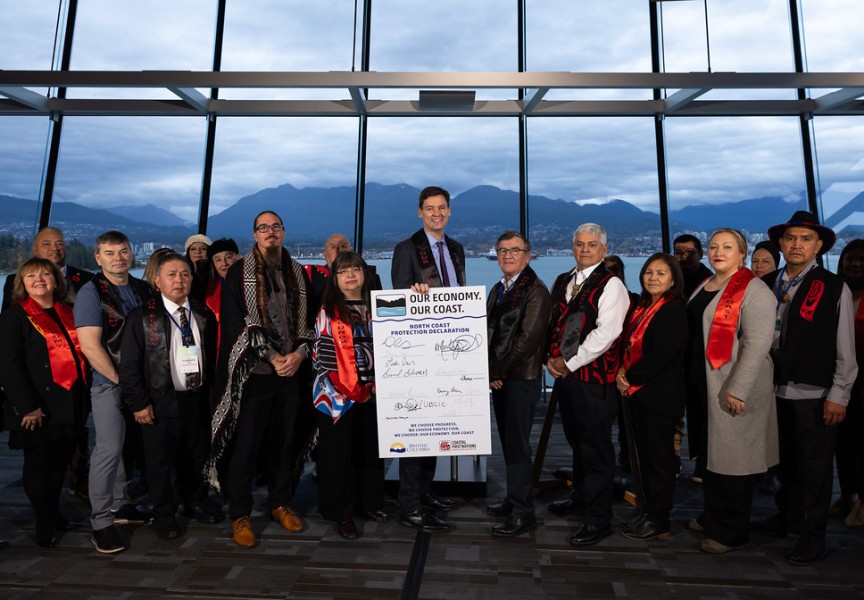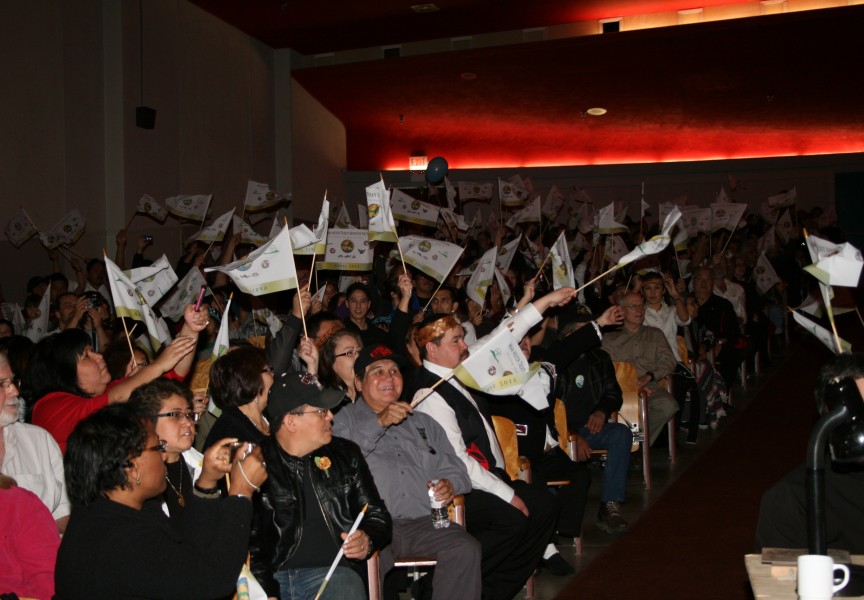In their fight to gain territorial rights, a recent court ruling has left the Nuchatlaht with two options: return to the judge to argue for smaller sections of the area, or appeal the decision altogether.
The deadline for their decision has been extended until the end of July by Justice Elliot Myers, who on May 11 delivered a decision from the B.C. Supreme Court. Myers recognized that the Nuchatlaht are the rightful owners of portions of the northern part of Nootka Island – but not all of the 20,000 hectares identified in the First Nation’s Aboriginal title claim for the area.
Over six years since the small Vancouver Island First Nation first filed its title claim to the court, Myers’ decision was met with a combination of celebration and disappointment.
Archie Little, a Nuchatlaht councillor and house speaker, summed up his response with a quote from Thomas King, who wrote The Inconvenient Indian.
“He said, ‘Law and justice are not the same.’ And it was proven in the Nuchatlaht case,” said Little.
Although Myers found that the Nuchatlaht are the proper rights holders since 1846, when the British Crown asserted sovereignty over the area, he wasn’t satisfied enough evidence was presented showing that the First Nation used the entire claim area. Myers noted that the only “direct evidence” of occupation was in the vicinity of the shore.
“I’m surprised by the decision and disappointed. I think that the Nuchatlaht have a very strong territorial claim, this is what we put before the judge,” said Owen Stewart, who represents the Nuchatlaht as part of their legal team. “At the same time, there’s a lot to celebrate within the decision. The Nuchatlaht were successful in basically every issue of substance.”
The court decision heavily relies on the Tsilhqot’in case as a precedent, which set out exclusivity in an area and continued occupation as the legal test for granting Aboriginal title. In his decision Myers noted inherent difficulties a coastal First Nation could have in applying these factors.
“It may be that this case demonstrates the peculiar difficulties of a coastal Aboriginal group meeting the current test for Aboriginal title, given the marine orientation of the culture,” he wrote. “For example, there will probably not be trails between one coastal location and another, given that the means of transport was primarily by canoe.”
This lends to an element of the provincial government’s argument against the Nuchatlaht, which stated that much of Nootka Island’s interior is rugged, steep terrain, heavily forested and uninhabitable.
“If you’re Switzerland, and you’re going to try and prove title, how are you going to prove the tops of the mountains?” reflected Stewart. “No one goes up there. It’s the tops of the alps. And so, would Switzerland only get the valley bottoms?...I think the obvious answer is, no, Switzerland would get the whole thing.”
“We used every square inch of our Ḥahahuułi,” said Little, who lived in the territory as a child. “We hunted, we trapped, we went to the mountains to pray, to be alone to prepare for things that we had to do.”
“When huge canoes were to be built, it was easier to build the canoe on site, instead of moving a tree down a hill,” added Little. “There’s evidence all over that we did that.”
The Nuchatlaht are confident that more evidence can be presented proving usage throughout the territory, and Stewart said that another archaeological survey can be done if needed.
“I’ve spoken to a number of experts who are confident there is lots to find,” he said. “They’ve said to me you can’t hit a golf ball in Nuchatlaht without hitting an archaeological site.”
With under 170 members, the cost of fighting for title in court has forced the small First Nation to make sacrifices, said Little. But at this point, there is no turning back.
“We can’t afford to quit, and we have friends that support us,” he said. “With no doubt we’ve made huge sacrifices. We’ve done that because we believe in what we’re doing.”
Those who were involved in the Tsilhqot’in case have said that in the realm of an Aboriginal title claim in British Columbia, the Nuchatlaht are already far ahead. In his recent judgement Myers dismissed the province’s argument that in 1846 an ununified collection of local groups occupied the claim area. The decision recognizes the Nuchatlaht confederacy at the time, and even includes the Shuma’athat in this, even though this group probably didn’t join until after the time of British sovereignty.
“I would doubt that there is a single modern First Nation in B.C. that isn’t the product of the fusion of historically independent groups,” said Stewart. “The court is saying that you don’t have to have a perfect tracing of this history, they’re all in front of me now.”
“It’s frustrating, but we have to keep the course and move forward,” said Little, looking to the province’s arguments. “They just have to stop pretending we’re not here - that the land they squatted on belongs to somebody: a First Nation’s.”

